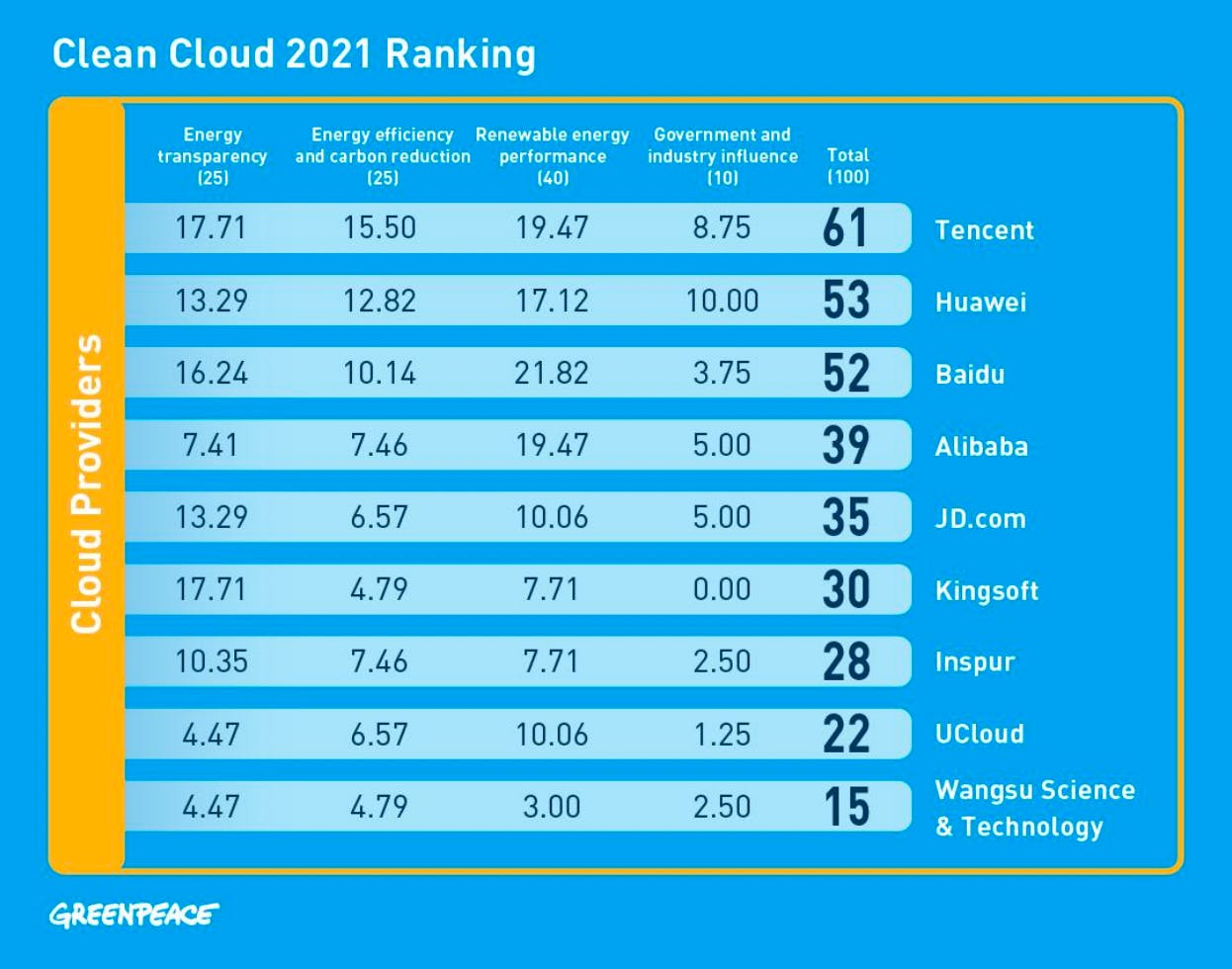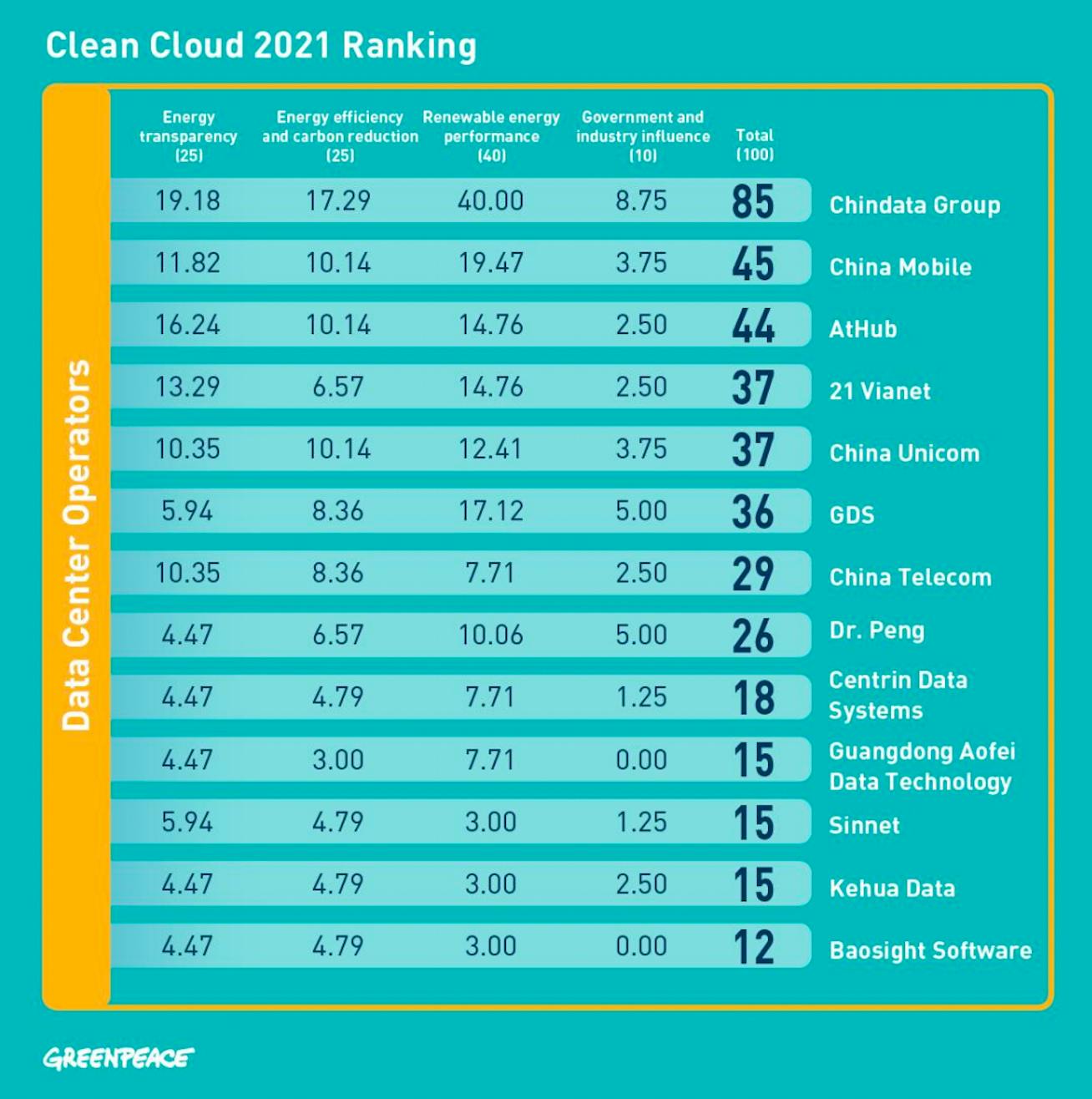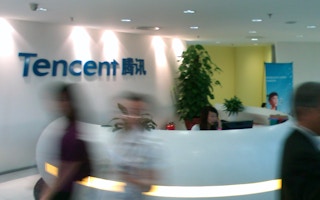China’s energy-guzzling internet service providers are under pressure to shrink their monster carbon footprint to help meet the country’s national emissions reduction goals, set in September.
To continue reading, subscribe to Eco‑Business.
There's something for everyone. We offer a range of subscription plans.
- Access our stories and receive our Insights Weekly newsletter with the free EB Member plan.
- Unlock unlimited access to our content and archive with EB Circle.
- Publish your content with EB Premium.
But China’s cloud providers and data centre firms are making uneven progress to reduce their emissions, with only about a half of the country’s biggest web services firms actively purchasing renewable energy to lower their carbon exposure, according to a report by environmental group Greenpeace, published on Wednesday (21 April).
Tech firms matter to China’s energy transition story. Data centres account for 2 per cent of China’s electricity consumption, and their energy use is projected to grow by more than two-thirds from 2019 to 2023, when it will exceed the annual energy consumption of Australia.
The Covid-19 pandemic has driven an increase in China’s internet population to almost one billion — one fifth of the global total — as millions more Chinese work, shop and watch videos online, putting more pressure on the country’s data centre infrastructure.

Tencent tops the ranking of China’s cloud providers [click to enlarge]. Source: Clean Cloud 2021
In Greenpeace’s ranking of China’s “clean cloud” providers, Tencent, the owner of chat app WeChat, emerged as the Chinese tech sector’s decarbonisation frontrunner, ahead of Huawei and Baidu. Tencent rated highly for transparency, increasing renewable energy procurement and a declaration that it would work toward carbon neutrality.
Greenpeace’s study, called Clean Cloud 2021, used publicly available data to research China’s 22 largest cloud and data centre companies, comprising 74 per cent of China’s public cloud market and over 78 per cent of China’s data centre market.
Alibaba, China’s biggest technology company and one of the world’s largest e-commerce firms, slid down the ranking introduced last year into fourth, rating poorly for clean energy use and transparency. Alibaba has yet to follow the government’s lead in setting renewable energy and carbon neutrality targets.
Chindata was ranked as China’s top data centre operator. It is the only Chinese tech company to pledge to achieve carbon neutrality by 2030. Last year, Chinadata committed to developing 1.3 gigawatts of wind and solar projects in Shanxi and Hebei provinces, making it one of the top three renewable energy buyers globally.

Chinadata rops the ranking for data centre companies [click to enlarge]. Source: Clean Cloud Ranking 2021
Chindata is one of only two Chinese tech companies that have recorded renewable energy usage rates higher than 3 per cent, the other being Baidu.
In its report, Greenpeace urged China’s web firms to set targets for 100 per cent renewable energy use and achieve carbon neutrality by 2030. The environmental group said that carbon offsets were “not a substitute” for the reduction of fossil fuel emissions, adding that firms must scale up procurement of wind and solar energy, and actively disclose energy use data and greenhouse gas emissions data.
Greenpeace East Asia climate and energy campaigner Ye Ruiqi said that while more Chinese companies have started to procure renewable energy and to disclose emissions data, the pace of clean energy adoption is “not nearly fast enough.”
“Especially when we consider that China’s biggest tech company, Alibaba, and its biggest independent data centre operator, GDS, have yet to issue renewable energy or carbon neutrality commitments,” she said.
Ye noted that China’s pledge to reach carbon neutrality by 2060 should spur Chinese tech giants to commit to carbon neutrality, aided by the falling cost of renewables. The levelised cost of electricity (LCOE) for solar and wind power is already cheaper than gas-fired power in China, and is expected to be competitive with coal by 2026.
As of 2018, China’s data centres were 73 per cent powered by coal, the largest source of man-made carbon emissions, and consumed an estimated 161 billion kilowatt-hours of electricity — more than the consumption of Malaysia.

















